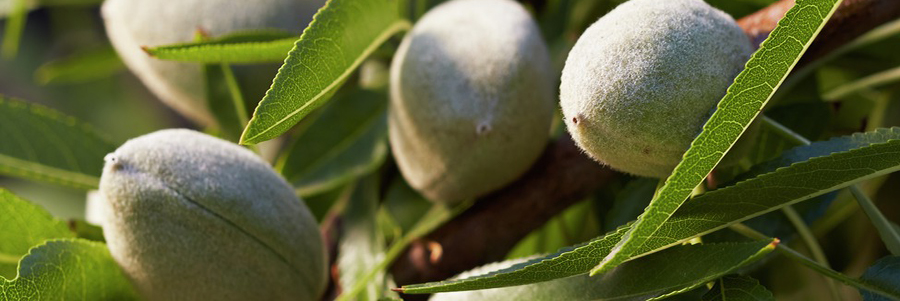For Immediate Release
April 23, 2020
For More Information:
Desiree Silva
dsilva@almondboard.com
MODESTO, Calif. – For the first time, the Almond Board of California (ABC) is concurrently releasing two California almond industry acreage reports: USDA’s National Agricultural Statistics Service (NASS) 2019 California Almond Acreage Report and Land IQ’s 2020 Standing Acreage Initial Estimate (bearing acres, only). These reports are being issued side by side to improve industry reporting methods and provide a fuller picture of California’s almond acreage.
USDA-NASS reports a continued increase in California’s almond acreage in 2019. Bearing acres, or orchards that have matured enough to produce a crop, are estimated at 1.18 million acres, up 8 percent from 2018. Total almond acreage, including non-bearing trees, is estimated at 1.53 million, up 10 percent from the previous year.[i] Nonpareil continued to be the leading variety, followed by Monterey, Butte, Carmel, and Padre.
Land IQ’s initial estimate for total bearing acreage in 2020, which reflects standing acreage that will be productive during the 2020/2021 harvest, is 1,251,137 acres.[ii] This estimate takes into account both young orchards coming into production and orchards removed or estimated to be removed.
As almond acreage continues to increase in California, growers remain committed to continuous improvement, finding ways to responsibly produce more almonds to meet global and domestic demand and continuing to advance toward achieving the Almond Orchard 2025 Goals.
“Having the best acreage statistics possible allows the industry and ABC to plan for future production,” said Richard Waycott, president and CEO of the Almond Board. “USDA-NASS’s annual acreage report is the first of three annual reports, including the Subjective Estimate released in May and Objective Report in July, commissioned by the Almond Board to provide statistical transparency to industry stakeholders around the world.”
Since 1997, the USDA-NASS Pacific Regional Office has conducted annual acreage surveys of California almond growers to provide information on new plantings and removals. Each USDA-NASS California Almond Acreage Report includes estimates on bearing, non-bearing and total acreage, in addition to data organized by variety, year planted and county.
A major source of data for this survey is almond growers’ voluntary responses to mailed questionnaires distributed by USDA-NASS, with consecutive telephone and field follow-up. To arrive at the estimated almond acreage, USDA-NASS compares its almond acreage database with the 2017 Census of Agriculture, pesticide application data maintained by County Agricultural Commissioners and the California Department of Pesticide Regulation, in addition to data collected on the 2019 Almond Nursery Sales Report, which this year USDA-NASS released in conjunction with the California Almond Acreage Report.
In 2018, ABC first commissioned Land IQ, a Sacramento-based agricultural and environmental scientific research and consulting firm, to develop a comprehensive, living map of California almonds. The map is the result of nearly a decade of research, and because Land IQ’s approach does not rely on surveys or extrapolation, it has an accuracy of 98% or greater.[iii] Beginning in 2019, ABC began a mapping process with Land IQ in which two acreage estimates will be released annually: the initial estimate of bearing acreage in April and the final estimate, with both bearing and non-bearing acreage for the same production year, delivered in December. In addition to the acreage estimates, Land IQ will annually produce an estimate of removed acreage. This year, Land IQ’s spatial analysis shows that between September 1, 2019, and April 1, 2020, 29,817 acres were removed and estimates that an additional 9,000 acres will be removed from April 1 to August 31, 2020, for a total estimate of 38,817 acres removed.
Starting in 2020, Land IQ will annually provide its initial estimate to USDA-NASS to fine-tune the official California Almond Acreage Report and other forecasts. The USDA-NASS reports and estimates remain the official Almond Board statistics provided for the California almond industry.
“Combining the Land IQ data with the USDA-NASS California Almond Acreage Report helps improve the accuracy of the reports,” Waycott said. “This is one of several ongoing improvements we have made to ensure we are providing the most reliable reports possible for the industry.”
On Tuesday, May 12, 2020, USDA-NASS will release the 2020 Subjective Estimate, which provides an initial forecast of the upcoming crop. Data for the Subjective Estimate is based on opinions obtained from almond growers in a survey sent by USDA-NASS. Almond growers will soon receive the USDA-NASS survey and are encouraged to participate. On Tuesday, July 7, 2020, USDA-NASS will release the 2020 Objective Report. This report collects data later in the growing season, closer to harvest, and is based on an actual count of nuts on the trees.
[i] USDA-NASS. 2019 California Almond Acreage Report. April 2020.
[ii] Land IQ. California Statewide Almond Mapping - 2020. Based on data from USDA National Agricultural Imagery Program (NAIP) and USGS Landsat.
[iii] Land IQ draws on multiple lines of evidence including agronomic and remote sensing knowledge, unique field boundaries, robust on-the-ground verification, publicly available imagery and other spatial and non-spatial resources.


